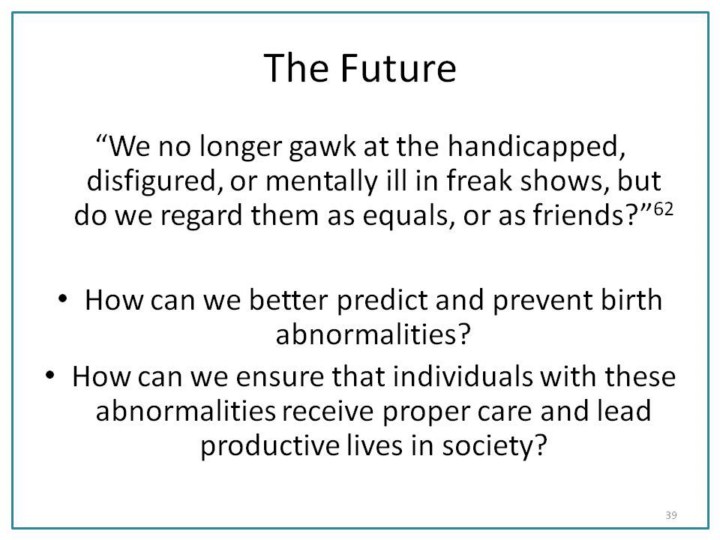| front |1 |2 |3 |4 |5 |6 |7 |8 |9 |10 |11 |12 |13 |14 |15 |16 |17 |18 |19 |20 |21 |22 |23 |24 |25 |26 |27 |28 | 29 |30 |31 |32 |33 |34 |35 |36 |37 |38 |39|40 |41 |42 |43 |44 |45 |46 |review |
 |
A noteworthy change in reaction to abnormal individuals has been to view them as members of society rather than outcasts to be studied or exhibited. This has undoubtedly helped children live more normal lives. However, as Y. Edward Hsia said to a conference on birth defects, “We no longer gawk at the handicapped, disfigured, or mentally ill in freak shows, but do we regard them as equals, or as friends?”63 This inclusionary view seems strongly dependent on society’s emphasis on individuality and freedom. These changes, along with medical and legal advances, shape how our society understands infants with birth defects.
|